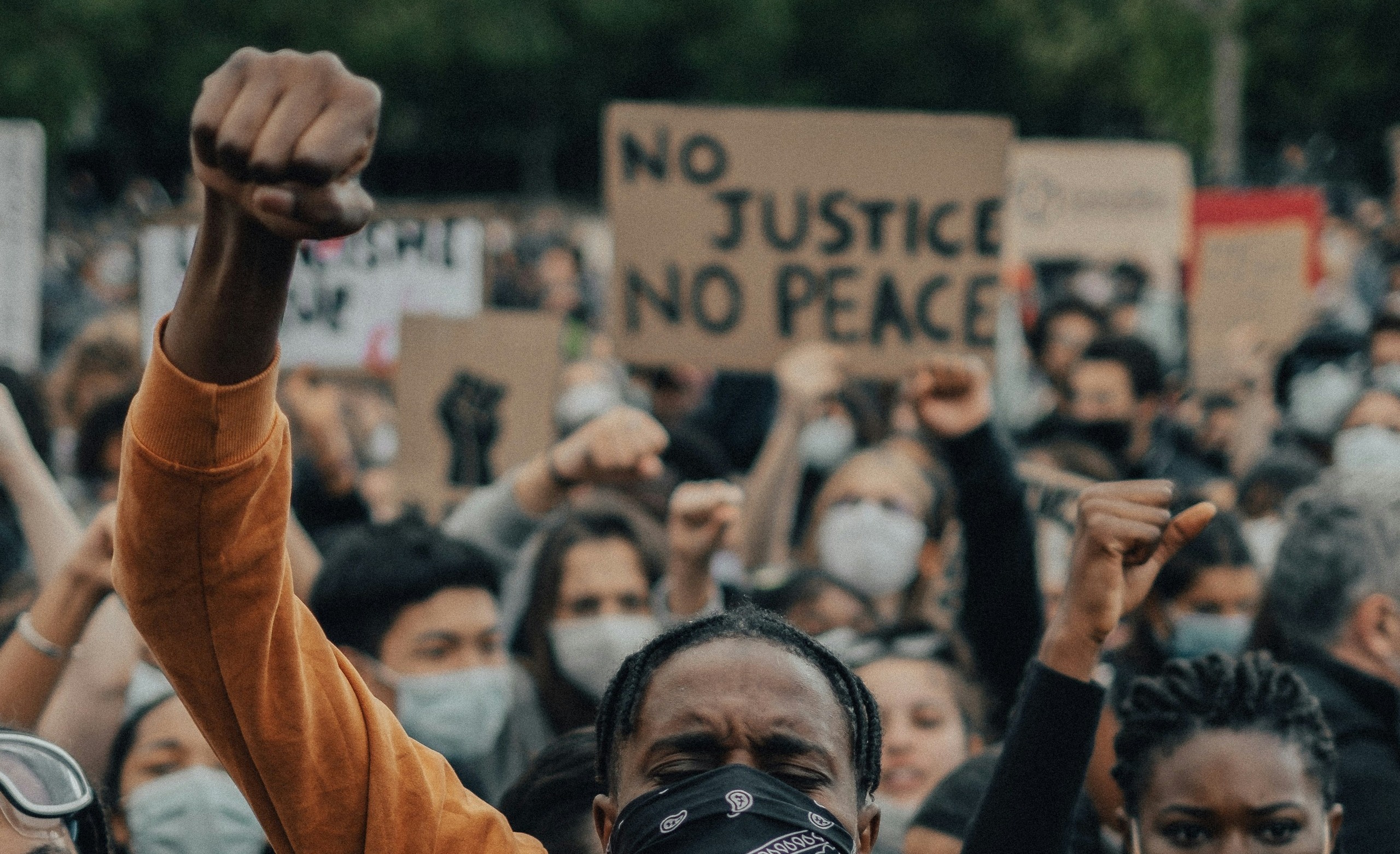
How To Survive Civil Unrest
Welcome to a guide on how to survive civil unrest. Civil unrest can strike unexpectedly, leaving communities vulnerable and individuals feeling overwhelmed. In this blog post, we will explore the essential steps and strategies needed to navigate through civil unrest with resilience and caution.
From understanding the root causes to practical tips for staying safe, this comprehensive guide aims to equip you with the knowledge and mindset necessary to survive civil unrest situations. So buckle up, stay alert, and let’s dive into how you can prepare yourself for whatever may come your way.
Understanding Civil Unrest
Civil unrest refers to a state of widespread public dissatisfaction or discontent within a society, often leading to protests, demonstrations, or even violent clashes. It can stem from various factors such as social injustice, political upheaval, economic instability, or racial tensions. Understanding civil unrest involves recognizing the underlying issues that fuel these tensions and being aware of the potential consequences it may bring to a community.
When individuals feel marginalized or oppressed by those in power, they may mobilize collectively to demand change and seek justice. This collective action can manifest in peaceful marches for reform or escalate into destructive riots fueled by anger and frustration. In essence, civil unrest is a reflection of societal grievances that have reached a boiling point and cannot be ignored any longer.
Being able to grasp the complexities of civil unrest allows us to better comprehend its impact on communities and individuals alike. By delving deeper into the root causes and dynamics at play during times of turmoil, we can begin to formulate effective strategies for both prevention and response when faced with such challenging circumstances.
Causes of Civil Unrest
Civil unrest can arise from a variety of complex factors that simmer beneath the surface of society. Economic disparities, lack of social justice, political corruption, and systemic inequality are often key catalysts for discontent among populations. When people feel marginalized or oppressed, their frustration can boil over into protests and demonstrations.
Historical grievances and unresolved conflicts can also fuel civil unrest, as communities grapple with past injustices that continue to impact their present circumstances. Cultural tensions, religious differences, and ethnic divisions may further exacerbate existing societal fissures.
The rapid spread of misinformation through social media platforms has emerged as a modern-day trigger for inciting civil unrest. False narratives, propaganda, and inflammatory rhetoric can easily inflame emotions and sow seeds of discord within communities.
Additionally, environmental issues such as natural disasters or resource scarcity can create conditions ripe for social upheaval. As climate change intensifies and global competition for limited resources grows fiercer, these challenges may contribute to heightened tensions within societies worldwide.
By understanding the multifaceted causes of civil unrest, we gain insight into the complexities at play in turbulent times – shedding light on the importance of addressing root issues to prevent future upheavals.
Signs of Civil Unrest in a Community
As tensions rise within a community, there are often telltale signs indicating the possibility of civil unrest on the horizon. One common sign is an increase in public demonstrations or protests, where people gather to voice their grievances or support for a particular cause. These gatherings can quickly escalate into larger events if not properly managed.
Another sign to watch out for is a heightened police presence in the area, as authorities may anticipate potential disturbances and aim to maintain control. Road closures, barricades, and checkpoints could also indicate that tensions are running high and precautions are being taken.
Social media platforms can be another indicator of brewing unrest, with posts inciting violence or spreading misinformation that fuels anger and division among community members. Additionally, rumors circulating about planned acts of vandalism or looting can be early warning signs of trouble ahead.
It’s crucial to stay informed and vigilant during such times, keeping an eye out for these signs to take necessary precautions and ensure your safety amidst potential civil unrest in your community.
Preparing for Civil Unrest
Preparing for civil unrest is crucial in ensuring your safety and well-being during uncertain times. Start by creating a communication plan with your loved ones, establishing meeting points, and determining how to stay connected if traditional methods fail.
It’s essential to stock up on supplies like food, water, medications, and other necessities that can sustain you for an extended period. Consider investing in alternative sources of power and staying informed about local news updates and emergency procedures.
Developing a safety strategy for both at home and while on the move is vital. Familiarize yourself with evacuation routes, secure your property, and practice situational awareness in public spaces.
Additionally, learning basic first aid skills can make a significant difference in emergencies. Stay informed about community resources available to support you during challenging times. Remember that being proactive in preparation can greatly increase your chances of navigating civil unrest safely.
Basic Survival Tips for Civil Unrest Situations
In times of civil unrest, being prepared is key to staying safe and secure. Here are some basic survival tips to help you navigate through uncertain situations: First and foremost, have a communication plan in place with your loved ones. Make sure everyone knows where to meet up or how to stay connected if separated.
Stock up on essential supplies like food, water, medications, and first aid kits. Having a well-stocked emergency kit can make all the difference during unstable times. Stay informed by monitoring reliable news sources and official channels for updates on the situation. Knowledge is power when it comes to making informed decisions.
Avoid unnecessary travel during periods of civil unrest unless absolutely necessary. Stay put in a safe location until the situation calms down. Trust your instincts and prioritize your safety above all else. It’s better to be cautious than take unnecessary risks in turbulent times.
What to Do During a Protest or Riot
When finding yourself in the midst of a protest or riot, it’s crucial to stay calm and assess your surroundings. Avoid confrontation and try to blend in with the crowd without drawing attention to yourself. Keep a safe distance from any violence or aggressive behavior.
If things start escalating, look for an escape route that is away from the chaos. Stay alert and be aware of your surroundings at all times. If possible, seek shelter in nearby buildings or businesses until the situation calms down.
Avoid engaging in any provocative actions or behaviors that could escalate tensions further. Remember that your safety should always be your top priority during these challenging moments. Trust your instincts and make decisions based on what will keep you out of harm’s way.
Staying Safe at Home and in Your Neighborhood
When civil unrest hits close to home, staying safe in your neighborhood becomes paramount. First and foremost, ensure all doors and windows are securely locked at all times to prevent unauthorized entry. Consider installing security cameras or alarms as an added layer of protection.
It’s also crucial to establish a network with your neighbors for mutual support and communication during uncertain times. Create a community watch system where residents can alert each other of any potential dangers or suspicious activities in the area.
Additionally, have a plan in place for emergency situations such as power outages or disruptions in basic services. Stock up on essential supplies like food, water, medications, and first aid kits that can sustain you and your family for an extended period if needed.
Stay informed about the latest developments in your area through reliable sources and avoid unnecessary travel outside unless absolutely necessary. By being vigilant and proactive, you can increase your chances of staying safe amidst civil unrest right within your own neighborhood.
Mental and Emotional Preparedness for Civil Unrest
In times of civil unrest, mental and emotional preparedness is just as crucial as physical readiness. The uncertainty and tension can take a toll on your well-being, so it’s essential to prioritize your mental health. Stay informed but limit exposure to distressing news or social media posts that can fuel anxiety.
Take a break from television and engage in activities that bring you peace and calm. Maintain a routine to provide structure amidst chaos. Ensure you’re getting enough rest, eating well, and staying hydrated. Small habits can make a big difference in how you cope with stress. Reach out to loved ones for support and connection.
Having a strong support system can help alleviate feelings of isolation during challenging times. Practice mindfulness techniques such as deep breathing or meditation to center yourself when feeling overwhelmed. Remember, taking care of your mental health is not selfish; it’s necessary for resilience in the face of upheaval.
Dealing with the Aftermath: Rebuilding and Recovery
Once the dust settles and the chaos subsides, it’s time to focus on rebuilding and recovery in the aftermath of civil unrest. This phase can be overwhelming as you assess the damage done to your community or personal property. Take a deep breath and remind yourself that resilience is key in times like these.
Reach out to neighbors, local organizations, or government agencies for support and resources. Coming together as a community strengthens your ability to rebuild stronger than before. Remember, you are not alone in this process.
Start by prioritizing safety measures such as securing your home or business and addressing any immediate needs. Document any damages for insurance purposes but also keep track of positive moments of solidarity amidst the turmoil.
Embrace small victories along the way – every step forward counts towards recovery. Keep an open mind towards new beginnings and opportunities that may arise from adversity. Stay strong, stay united, and remember that brighter days lie ahead.
Conclusion: Taking Action
In times of civil unrest, it is crucial to be prepared both physically and mentally. By understanding the causes, signs, and ways to prepare for such situations, you can increase your chances of survival and safety. Remember that staying informed, having a plan in place, and taking proactive steps are key to navigating through civil unrest.
Taking action involves not only preparing yourself but also being aware of your surroundings and community. Stay connected with neighbors, local authorities, and emergency services. By working together and supporting each other during challenging times, we can build stronger communities that are resilient in the face of adversity.
Remember that while the thought of civil unrest may be daunting, being prepared can make a significant difference in how you navigate through such situations. Stay safe, stay informed, and take action to protect yourself and those around you.



